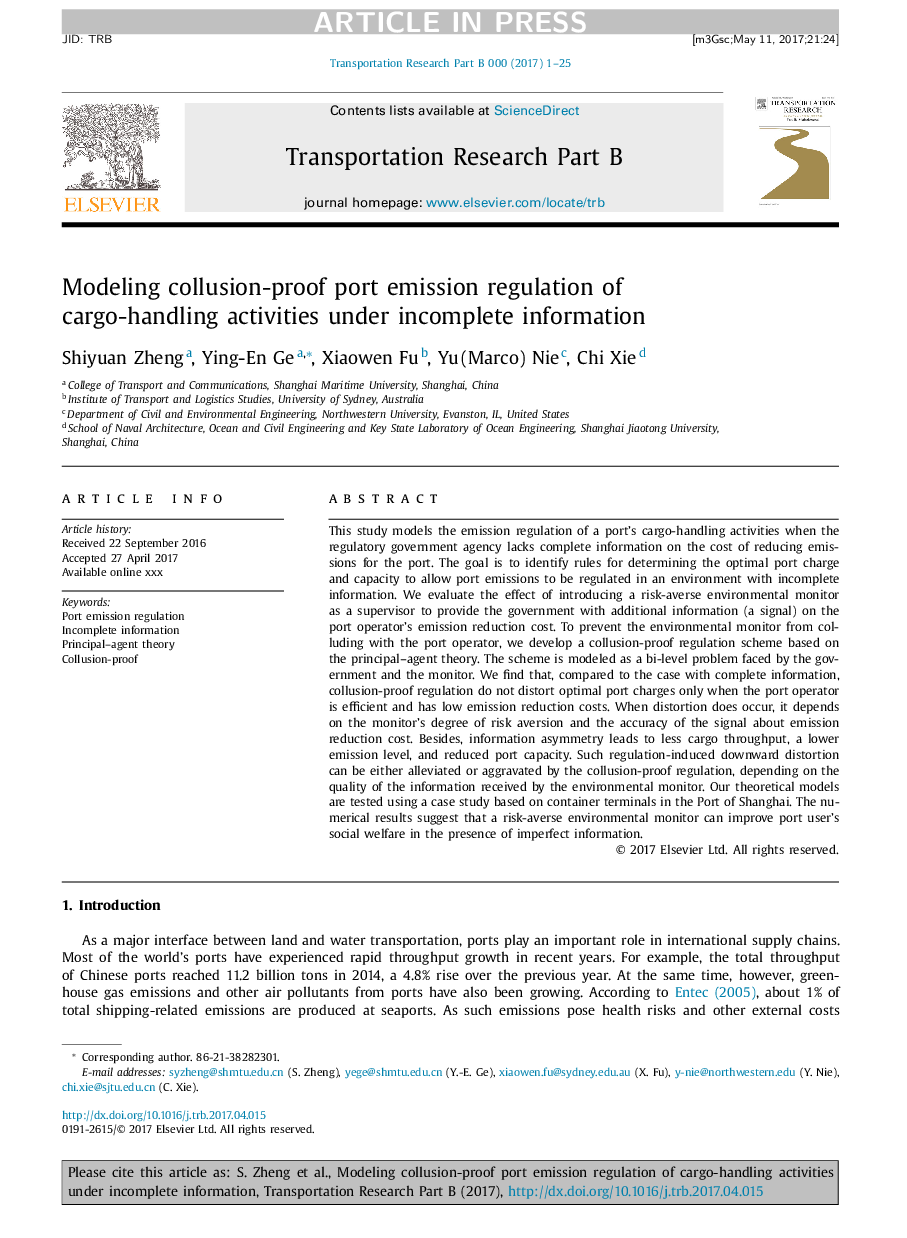ترجمه فارسی عنوان مقاله
مدل سازی مقررات توزیع پورت ناشی از مخالفت با فعالیت های حمل و نقل تحت اطلاعات ناقص
عنوان انگلیسی
Modeling collusion-proof port emission regulation of cargo-handling activities under incomplete information
| کد مقاله | سال انتشار | تعداد صفحات مقاله انگلیسی |
|---|---|---|
| 140660 | 2017 | 25 صفحه PDF |
منبع

Publisher : Elsevier - Science Direct (الزویر - ساینس دایرکت)
Journal : Transportation Research Part B: Methodological, Volume 104, October 2017, Pages 543-567

